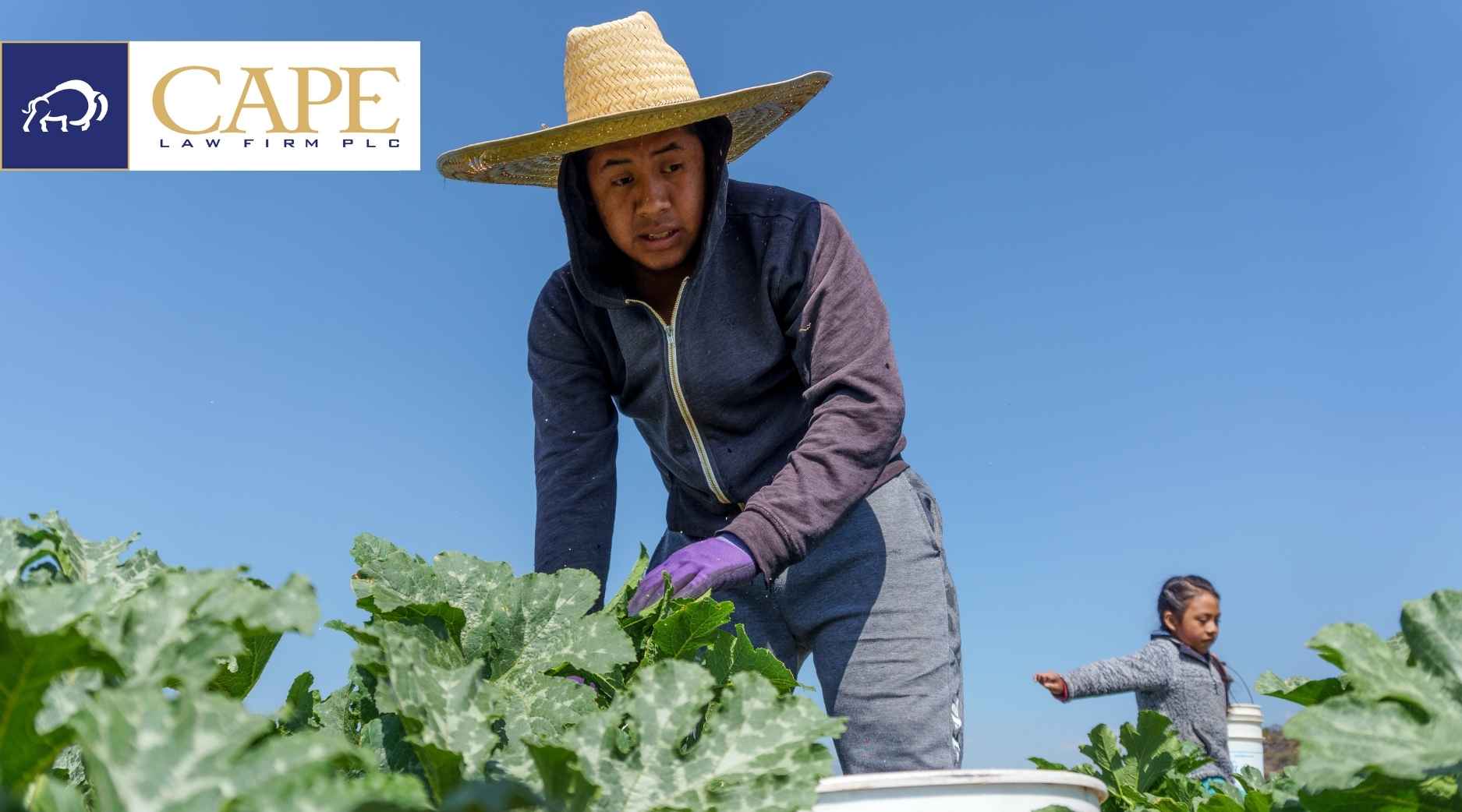Docket No. AMS-AMS-22-0025
87 Fed. Reg. 15198
Competition and the Intellectual Property System: Seeds and Other Agricultural Inputs
Thank you for the opportunity to submit comments to assist the USDA’s Agricultural Marketing Service prepare its report required by Executive Order No. 14036, “Promoting Competition in the American Economy.”
The comments provided herein focus on the seed industry, particularly seed with biotech traits. My interest in this topic stems from clients that are participants in the seed and agricultural input industry.
Issues of competition and consolidation in the seed industry are not universal across the entire sector. As other commentors have noted, firms supplying seed for certain major crops – corn, soybeans, cotton, and rice – have consolidated considerably in the last 30 years. By comparison, seed and input markets for other agricultural and horticultural crops are more fragmented and contain far fewer dominant firms. Perhaps not surprisingly, seed markets where consolidation is most prominent coincides with the crops that receive the majority of government assistance, typically through federal farm bills. Within the major crops, consolidation of firms controlling germplasm and biotech traits inserted in the germplasm is acute.
Within the corn-soybean-cotton sector, the role of genetic biotech traits dominates the competitive analysis. Ownership of biotech traits enable a level of control over every acre containing the trait. Whereas the developer of a new plant variety can achieve I.P. protection for the new variety, the trait owner gains control over every variety incorporating the trait. In this way, the trait owner acquires rights in an exponentially larger market which can comprise the majority of an entire crop. This fundamental characteristic represents the current state of corn-soybean-cotton seed markets.
Other commentors have effectively spoken to several aspects of consolidation among firms controlling biotech traits and the germplasm delivering those traits. The market is essentially dominated by an oligopoly of three large firms (Bayer, Syngenta, Corteva), with a fourth (BASF) following closely behind.
(4) Please share your views on whether, and if so how, the existing IP system—including plant patents, utility patents, and plant variety protection certificates—appropriately balances the need to incentivize innovation with the goal of ensuring public access to new and improved products at reasonable cost. Please explain why or why not, and discuss in context of seeds or the particular agricultural input of concern. If you have concerns, please explain the concerns and provide suggestions on how the IP system can be improved to address those concerns.
Existing U.S. law provides more opportunities for intellectual property protection for plants and plant materials than any other country, including utility patents, plant patents, and plant variety protection certificates. The protection provided by these laws is robust, and since the Supreme Court’s decision in Diamond v. Chakrabarty, 447 U.S. 303 (1980), has provided the foundation for agricultural biotechnology. No doubt, biotech traits are great innovations which have positively impacted U.S. agriculture. These innovations would have been difficult to achieve in the absence of the existing I.P. system.
The U.S. I.P scheme is not, in and of itself, a competitive concern in relation to seeds and traits. Rather it is the way I.P. rights are administered by the owners that pose challenges to competition. In the context of the first generation of biotech traits, the I.P. regime enabled the development and commercialization of the traits at reasonable cost. For example, the cost of the glyphosate tolerance trait (Roundup Ready) in soybeans was introduced at $5.00 per bag. At this price point, the technology was accessible to virtually all growers and was adopted quickly. Even as prices rose on first generation traits, other market participants, from distributors to growers, were able to realize reasonable financial benefits resulting from cost savings (i.e., fewer pesticide applications, fewer equipment passes, etc.). Likewise, licensing schemes that introduced first-generation traits were easier to perform and understand by licensees, while providing a level of autonomy to operate that no longer exists.
With next generation traits and trait stacks, the benefits have waned while also becoming more expensive. At the farm level, the next generation traits accomplish the much same thing as the old traits – herbicide tolerance and insect resistance. In other words, biotech traits in current seed offerings generally maintain the original benefits, but at greater cost. At the same time, alternatives, such as conventional varieties and first-generation traits are increasingly difficult to find and access.
(5) For seeds in particular, is the patent side of the plant-related IP system appropriately reserving its grant of statutory patent monopolies to inventions that are of significant utility, novelty and non-obviousness? Do you have concerns about patent quality in the area of plant-related IP or plant-related technologies? If you have concerns, please explain.
There is some concern that utility patents are being awarded for plant varieties that do not necessarily qualify for protection under the statutory criteria (utility, novelty, non-obviousness). In the years since the introduction of biotech traits, firms have sought and received patents for improved varieties themselves, often referred to as “germplasm patents,” particularly in corn and soybeans. Given the proliferation of germplasm patents in these crops, it would appear that the non-obviousness requirement is quite low for these crops.
Moreover, germplasm patents appear to be deployed as biotech trait patents are expiring. Thus, traits that become “generic” are made available through germplasm that is newly protected. The result precludes access to generic traits and lower-cost seed.
(7) Do farmers, ranchers, and other stakeholders have sufficient access to off-protection and generic options? If not, are regulatory tools, systems, or practices being utilized to inhibit access? For example, do you believe there is evidence of inappropriate strategies to extend the life of patents? Please explain and provide examples.
In the corn-soybean-cotton markets (with some qualifications), the answer is “No.” Patent protection has expired, or is imminent, on a number of first-generations biotech traits. However, for the most part those expirations have not resulted in generic versions in the marketplace. The notable exception is the first-generation glyphosate-tolerance trait for which the last patent expired in either 2014 or 2015, depending on which of Monsanto’s public announcements was deemed the official position. Other traits, such as first-generation Bt cotton, were quietly eliminated from the seed market far enough in advance of patent expiration as to eliminate seed supplies that would otherwise become generic and royalty-free. In short, there has not been a proliferation of “Me-Too” registrations for off-patent biotech traits as would be seen when patent protection expires on a conventional pesticide.
One current example is the upcoming expiration of U.S. Pat. No. 7,112,665, the last patent with a valid claim covering the glufosinate tolerance trait (Liberty Link). The ‘665 patent, acquired by BASF from Bayer in the most recent spate of mergers, will expire in September 2023. However, in anticipation of the potential for large quantities of Liberty Link crops becoming “generic” seed (and therefore, royalty-free), BASF has initiated a campaign to eliminate it from the market. BASF’s campaign is carefully timed to squeeze a final round of royalties from licensees, while also ensuring that generic seed supplies are eliminated. The steps in BASF’s plan include: (i) allowing Liberty Link soybean licenses to expire in 2021 (two years before expiration), (ii) prohibiting all new production of seed in the 2022 season, (iii) requiring sell-off of all inventory, (iv) requiring disposal of all unsold seed inventory as grain, (v) mandating comprehensive licensee reports verifying the sale or disposal of all seed, and (vi) auditing licensees’ books and records to verify complete elimination of seed. Thus, even though the Liberty Link trait will enter the generic realm, a generic seed supply will not exist. Even if a seed company wished to produce generic Liberty Link seed, the time and acreage required to produce commercially viable quantities is prohibitively long. In the interim, trait owners selectively withhold licenses for new biotech traits as a means to discourage commercialization of the generics.
(9) Please comment on IP enforcement. Do you believe farmers, breeders and small and medium sized enterprises face challenges concerning enforcement of their plant related IP rights? If so, please provide concrete examples. Do you believe farmers, breeders and small and medium sized enterprises face challenges from other companies asserting their IP rights against them? If so, please provide specific examples. Please also offer recommended solutions for mitigating those challenges.
and
(15) Please comment on the presence of, and any concerns around, licensing restrictions in seeds or other agricultural inputs. Please comment on cross-licensing practices, including restrictions or exclusive cross-licensing permissions, and any related concerns. Do fees on the same type of license vary and if so under what circumstances? Do licensees have access to information on comparable licenses? Are some companies or organizations denied reasonable access to licenses and on what basis? What further guidance, if any, on appropriate licensing practices would be helpful?
Licensing schemes have converged in recent years into what is arguably a single licensing model, especially within the majors of Bayer, Syngenta, Corteva, and BASF. To a certain degree, this convergence is the result of exchanges of assets, as well as relevant personnel, among these firms which has led to their current incarnation. Within these firms it is easy to observe the same personnel, in the same roles, administering the same I.P. and seed products, using the same tools, but with different letterhead. Thus, with respect to distribution and end-user licensing, these firms generally employ the same or very similar terms. Likewise, these firms often share the same vendors with respect to enforcement.
The only way to truly appreciate the breadth and depth of these licensing schemes is to study and compare the actual licenses themselves. The contractual terms reach far beyond grants of I.P. rights and impose wide-ranging, intrusive, and often poorly defined, obligations and requirements on licensees. A number of these contractual terms shift significant regulatory burdens and compliance risks to licensees. Terms defining financial returns for licensees are exceedingly ambiguous and contingent on factors that are unrelated to commercial performance. Examples include:
- Mandatory disclosure of licensees’ customer data, including detailed identities, specific product usage, individual field and storage locations, and other information. This data is an important asset for licensees and critical to their success. Trait owners leverage this data to compete head-to-head through their own brands.
- Mandatory disclosure of current and future business plans with detailed information regarding plans for individual products, including sales projections.
- Mandatory disclosure of licensees’ financial statements.
- Responsibility for handling end-user claims and complaints, but without the trait owner’s internal product data and know-how regarding product attributes and characteristics.
- Mandatory compliance with an inexhaustible list of so-called “stewardship” requirements, many of which are ambiguous or un-defined.
- Provisions for license termination for little or no reason at all.
- Licensee compensation provisions are contingent upon several factors, including minimum sales volumes, compliance with mandatory disclosures and ambiguous stewardship measures, and full collection of end-user royalties, among other things.
- A studied analysis of these licenses would likely conclude that they create de facto franchises, but without the regulatory protections for franchisees.
This list is not exhaustive. Licensees live in constant fear of the prospect of license termination, an event which can (and has) bring about the end of a licensee’s business. As mentioned above, trait licenses are uniquely powerful because they leverage control over entire crops and product portfolios. “De-licensing,” at both distributor and grower levels, shuts off access to every variety containing the trait. Further, de-licensing for one trait often results in termination of access to all traits in all crops.
The practice of “de-licensing” is an incredibly potent weapon because it can occur without any objective proof of a breach. A distributor or grower that is de-licensed is typically placed in a nationwide database that effectively blacklists them from accessing seed. Given the very high level of market penetration of biotech traits, the blacklisted distributor/grower may be unable to plant entire crops. Further, distributors that find too many of their customers placed on the de-licensed list may find it impossible to meet mandatory sales volumes.
Also troubling is the lack of transparency regarding licensee compensation. The compensation that a licensee may earn through sales is often unknown until far into the season, and even then, can be subject to change. Also, the use of various rebates, marketing cost shares, and loyalty programs makes it difficult, if not impossible, to determine how much a licensee should rightly earn. Farming is a very capital-intensive endeavor which requires careful planning and budgeting to remain successful. Seed and trait license terms need not add to the uncertainty already inherent in crop production.
Conclusion
Access to post-patent genetics and traits is vitally important and is a common feature of other agricultural input markets. Policies and systems that enable access and production of lower-cost seeds and traits would greatly benefit farmers and distributors, particularly in corn-soybean-cotton markets.
The seed/trait sector would also benefit from the sorts of legislation and policies that are employed in other agricultural markets, for example the Packers & Stockyards Act, or the Perishable Agricultural Commodities Act. These statutes provide guardrails for acceptable practices and provide remedies for those that are deemed unfair. They include prompt payment policies that ensure growers and small firms receive compensation on a timely basis. Current licensing practices are quite sharp and burdensome for many licensees. Application of the principles and policies of these statutes would yield a more equitable distribution of benefits among stakeholders and market participants.
I support the recommendations suggested by the American Antitrust Institute in its analysis of the effects of consolidation. Healthy markets are defined by numerous buyers and sellers with wide access to information.
The influence of the financial assistance deployed through federal farm bills should be studied as it relates to consolidation of firms in the major crops. It is not a coincidence that the biggest firms occupy the crops that receive the lion’s share of federal support. While financial support for agriculture is an important and necessary feature for sustainable, abundant, and safe agricultural products, it should not result in the mere transfer of wealth to the shareholders of mega-firms. De-coupling government assistance from particular crops is a policy objective worthy of consideration as a means to revitalize rural America and ensure a more equitable distribution of benefits. If the federal government wishes to preserve rural America and stem its declining population, it will have to adopt dramatically different policies than those which merely trod the same, worn-out path.
Finally, it would be quite helpful for USDA to continue discussion and comment on these issues. The current state of these markets has been allowed to develop over 30-plus years, making it difficult to answer succinctly. As evidenced by the number of questions USDA posed on this topic, more dialogue is needed from more participants. Thus, I would urge at least a second round of comment and discussion so that a fuller, more robust discourse can occur.
Sincerely,
Joel E. Cape
At least 74 comments were submitted online to this particular topic, although others may have been mailed in. The comments posted to date can be accessed through regulations.gov at Docket No. AMS-AMS-22-0025:





